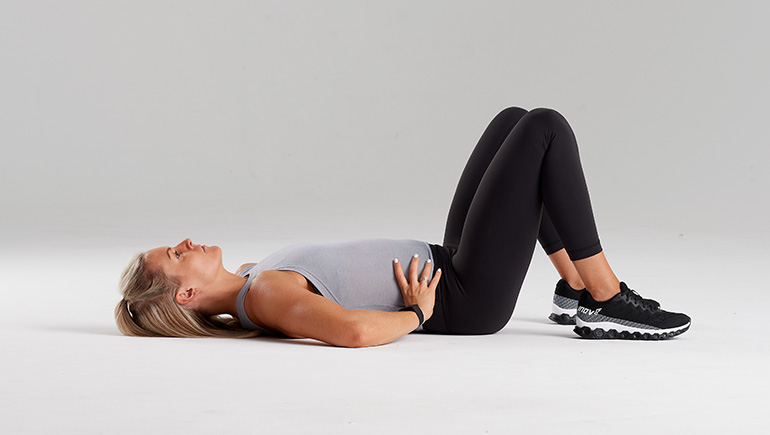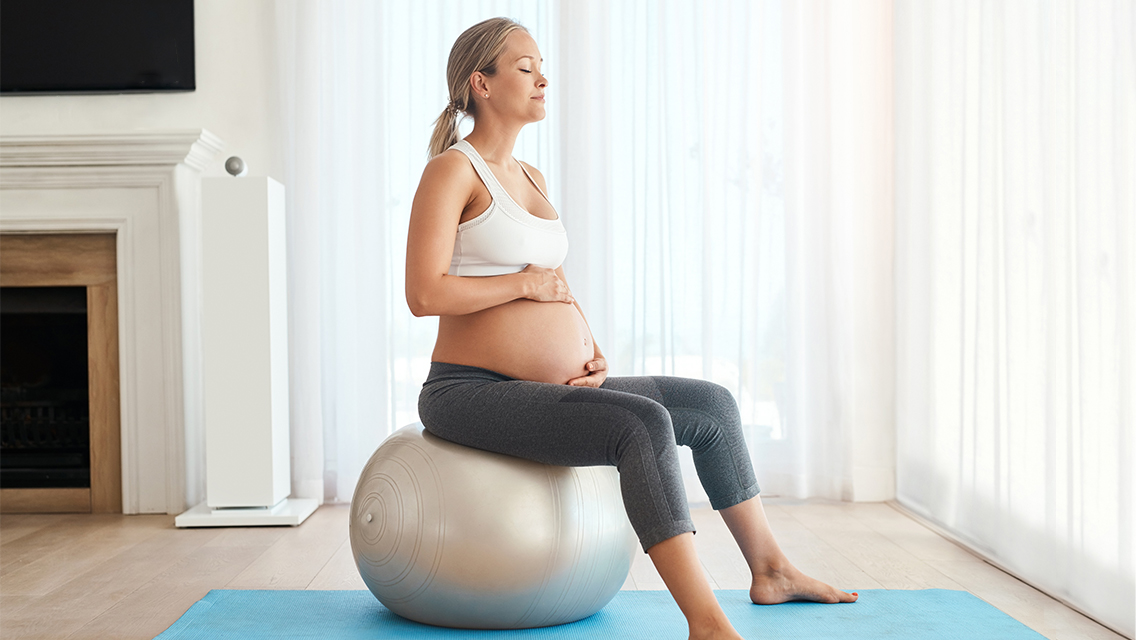Your pelvic-floor muscles are like any other muscles in your body: They benefit from being strengthened and stretched often through regular movement and function.
But it’s not enough to focus only on the pelvic-floor muscles — you also must train the abdominal and diaphragmatic muscles surrounding the pelvic floor. “They all relate to one another in terms of how they function,” says Alyssa George, PT, DPT, a physical therapist with Motion Minnesota who specializes in treating pelvic and orthopedic conditions.
Performing a combination of stretching and strengthening exercises can keep your pelvic floor strong and mobile. The following routine was codesigned by George and her Motion Minnesota colleague Britta Gauthier, PT, DPT, who specializes in pelvic-health and orthopedic rehabilitation. Incorporate the mobility exercises into your routine daily and the strength exercises up to three times per week.
If you experience pelvic pain or you’re already being treated for pelvic-floor dysfunction, consult a healthcare provider before performing these exercises.
Breathing and Mobility
Include these exercises in your daily routine.
Diaphragmatic Breathing
This form of breathing taps into your pelvic-floor muscles and prepares them for the moves that follow.
Perform one set of 10 breaths.
Full Instructions
- Lie on your back with legs bent or extended. Place one hand on your stomach.
- Breathe in deeply, feeling your belly push against your hand as it expands.
- Exhale fully, allowing your belly to draw in.
Pelvic Floor Contract and Release
Kegel exercises are effective for strengthening and lengthening the pelvic floor.

Perform one set of 10 breaths.
Full Instructions
- Lie on your back with your knees bent and feet on the floor, arms resting at your sides.
- Aim for a neutral pelvis position (not tucking your tailbone or excessively arching your back).
- Squeeze and lift your pelvic-floor muscles; imagine there is a string drawing your perineum up and in.
- Hold briefly and then release your pelvic-floor muscles with control.
- Allow the muscles to relax fully before repeating the contraction.
Cat–Cow
This classic yoga move increases lumbar (lower-spine) mobility, which is critical for pelvic-floor function.
Perform one set of 10 reps.
Full Instructions
- Begin on all fours with your shoulders stacked over your wrists and knees bent 90 degrees.
- On an inhale, slowly curve your lower back and tilt your pelvis up, allowing your belly to drop toward the floor.
- As you exhale, draw your belly in and gently arch your back up toward the ceiling.
Strength
Body-Weight Squat
The glutes and the pelvic floor are buddies, George says. A body-weight squat strengthens the glutes; learning to coordinate the movement with breath can help lengthen the pelvic floor.
Perform two sets of 10 reps.
Full Instructions
- Stand with your feet slightly wider than shoulder width apart.
- Inhale diaphragmatically. As you do, bend at your knees and hips and squat down until your knees are close to a 90-degree angle.
- Keep an elongated spine; don’t let your knees creep over your toes. On an exhale, stand back up by straightening your knees and hips simultaneously. Repeat.
- To progress the move, hold a dumbbell in each hand, with your arms extended at your sides.
Dumbbell Deadlift
Coordinating your breath with this classic hip-hinge exercise teaches you how to pick up heavy objects without holding your breath (holding your breath during a heavy lift is a common precursor to urine leakage).
Perform two sets of 10 reps.
Full Instructions
- Stand with your feet shoulder width apart, holding a medium-heavy dumbbell in each hand in front of your thighs. Choose a weight that is challenging for you and that you can use to perform all 10 reps with great form.
- Inhale diaphragmatically. As you do, bend your knees slightly and hinge at the hips to lower the dumbbells toward the ground. Keep the dumbbells close to your legs.
- On an exhale, stand back up by straightening your hips and knees simultaneously.
- Fluidly flow from one position to the next, trying not to hold your breath at any point. Keep your abdominal muscles engaged and your back straight during the exercise.
Banded Side Steps
This exercise targets the side-butt muscles that play a key role in pelvic-floor function.
Perform five sets of 10 reps in each direction. (Please note to place the band around your thighs versus your ankles.)
Full Instructions
- Stand with a small, closed-loop resistance band around your thighs, just above the knees.
- Bend your knees slightly so you’re in a quarter-squat position.
- Slowly step sideways, maintaining tension in the band.
- Continue stepping in one direction until you’ve completed 10 reps. If you’re tight on space, alternate sides with each rep.
Pelvic-floor health is an important, yet often overlooked, component of overall well-being. Discover how to keep this group of muscles strong and healthy by learning more at “Your Fit and Functional Pelvic Floor,” from which this article was excerpted.





This Post Has One Comment
Great exercises and simple enough to do routinely. Thanks!